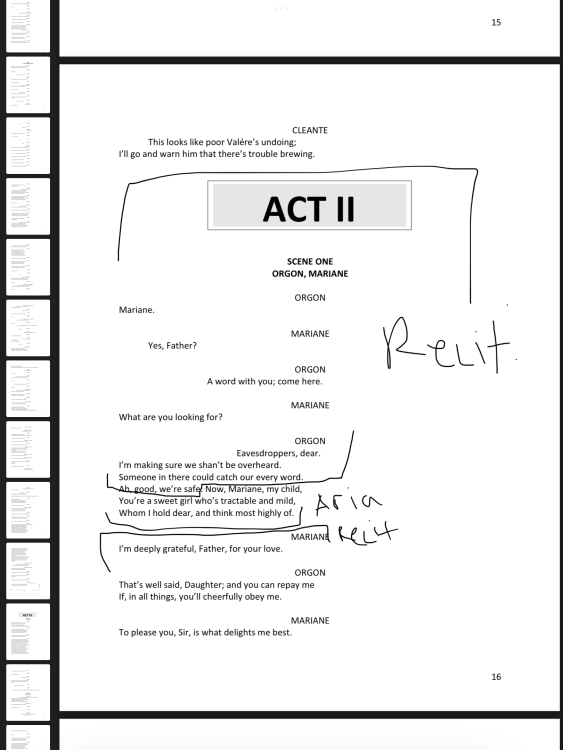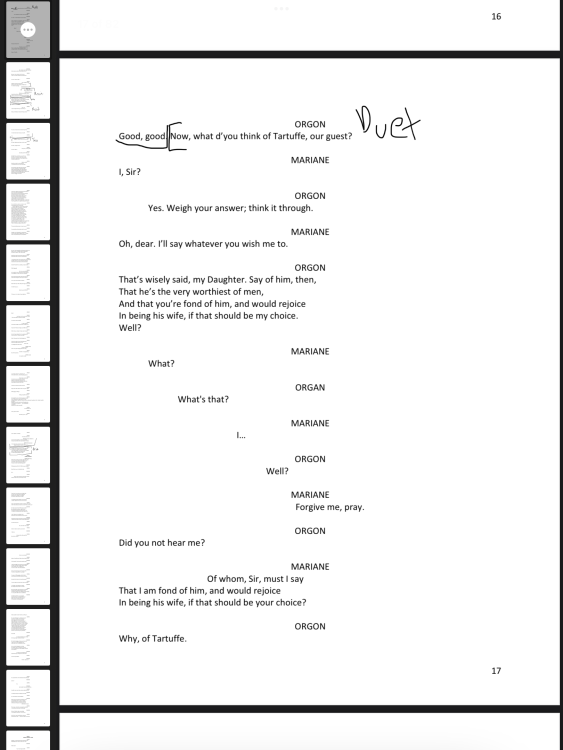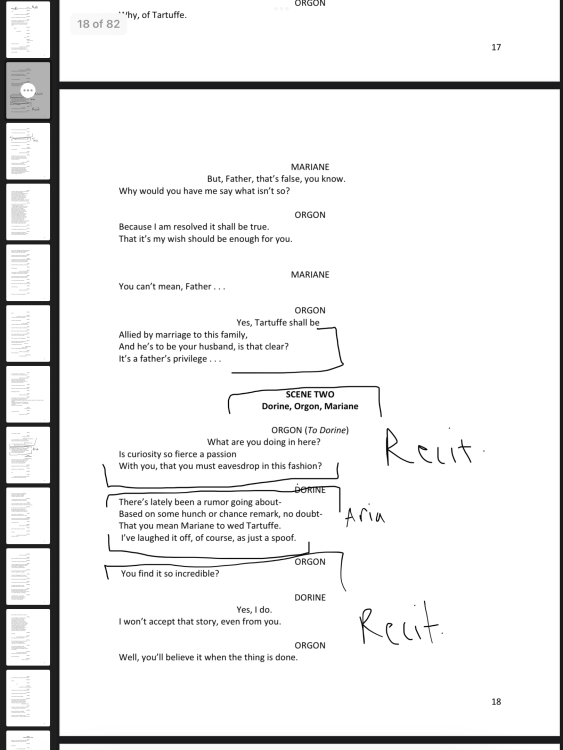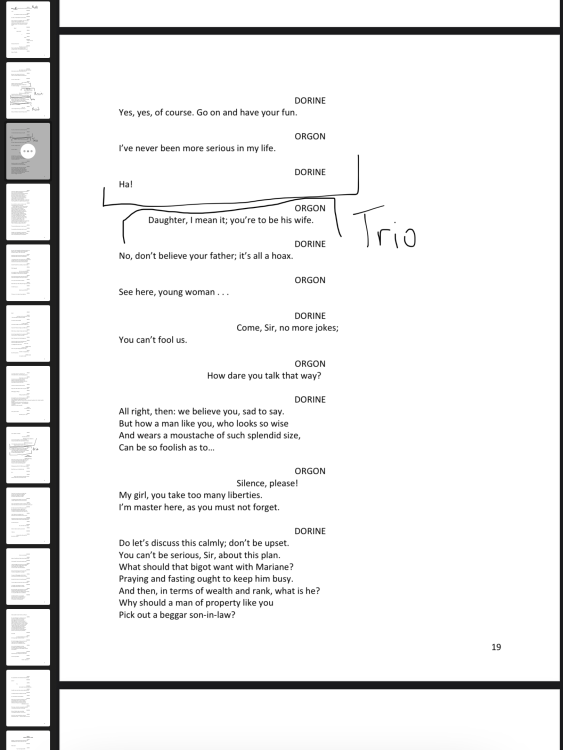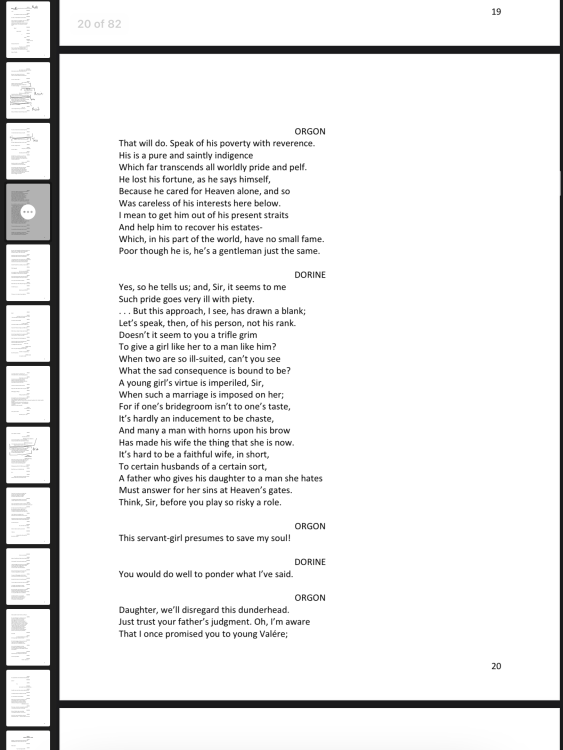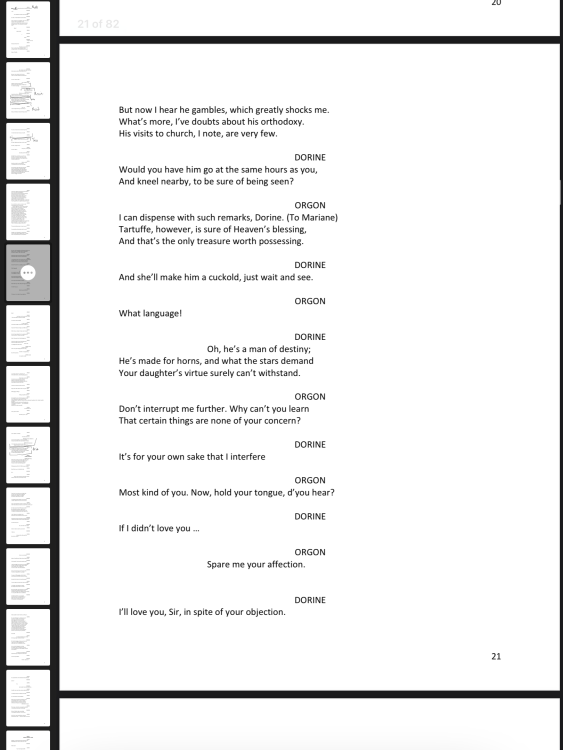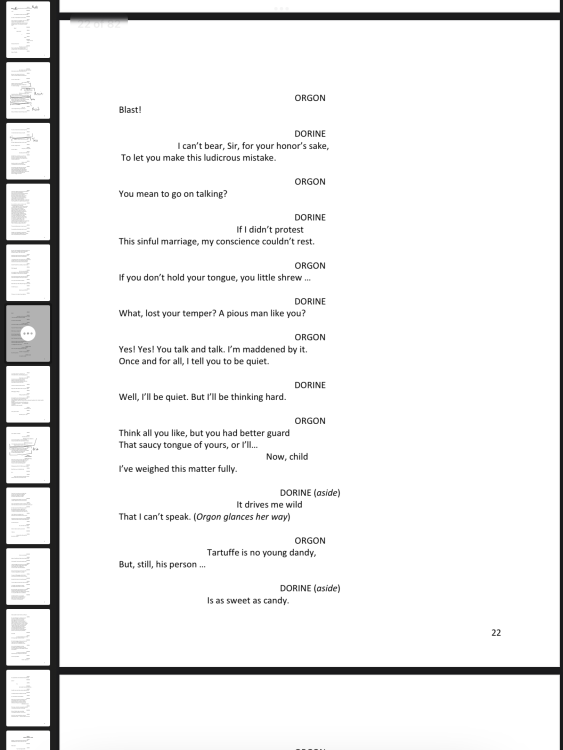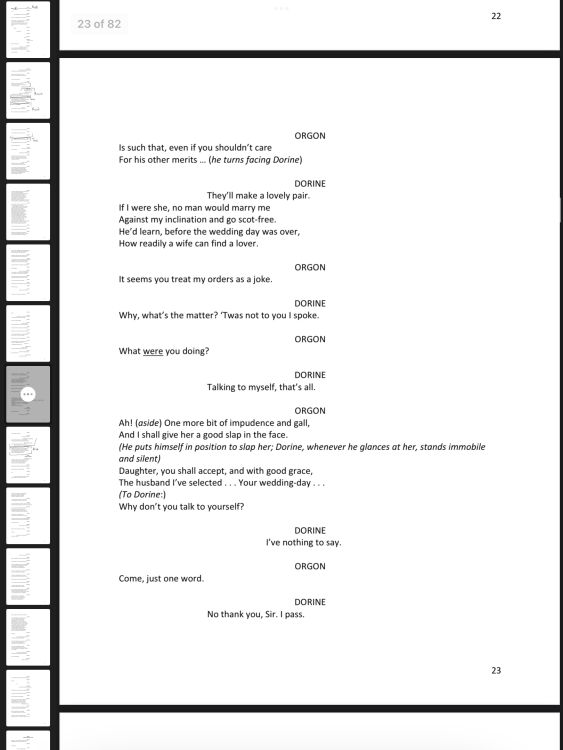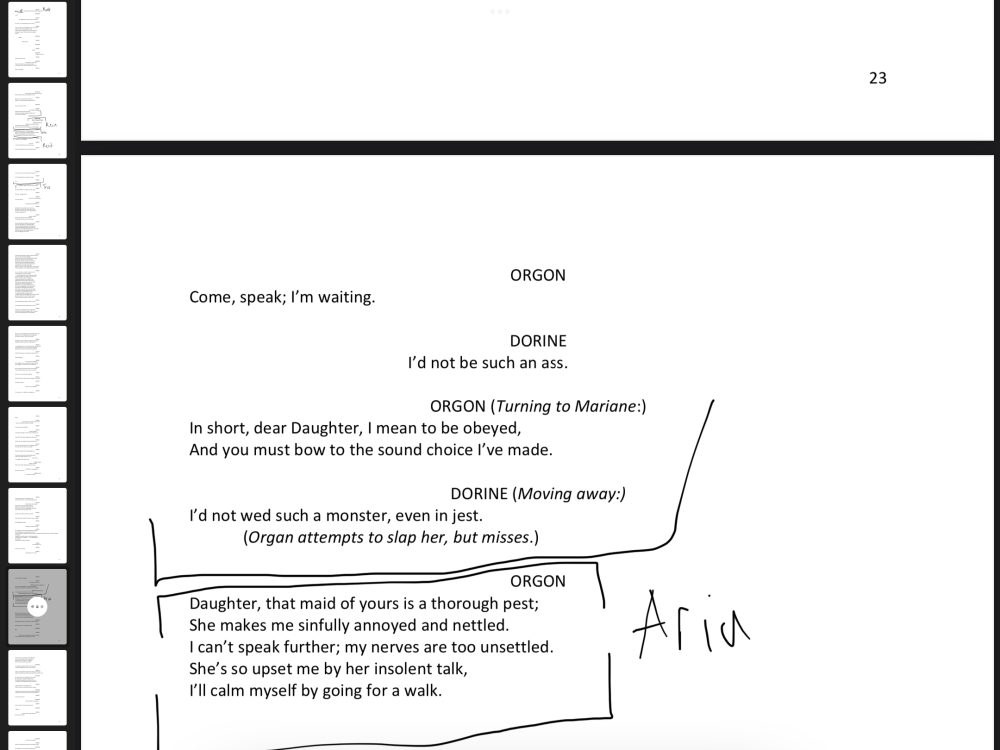All Activity
- Past hour
-
Henry Ng Tsz Kiu started following String quartet #1 - 2nd movement
-
PeterthePapercomPoser started following Operatic “formatting”
- Today
-

Sleep (SATB) Original Choral Song – New
Henry Ng Tsz Kiu replied to TJ Jones's topic in Choral, Vocal
Hello @TJ Jones! Welcome to the forum! I really love the calm Db major choral music here. I really love the ending with the dissonances, and the suspensions there is so good which do signify your quest and cry for answers. It's amazing that you are just 17 and come up with such heavy quest and sound effect. The only thing I am dissatisfied with it's the applause at the end, since the silence of the music should linger loner before interrupted by the applause!!!! You are clearly talented. Nothing to add and keep going and compose more music! Henry -
Henry Ng Tsz Kiu started following Sleep (SATB) Original Choral Song – New
-
Hello @lorenz.! Welcome to the forum and thanks for joining our community! Sorry for my late reply 😝! For me it's a very nice classical style wind quintet. I love the interactions between the instruments very much. I really love the section in b.82 with a funnier and lighter interactions between instruments. Probably I won't use the horn there since it would be too heavy to balance the dynamics with other woodwind instruments. I love the C minor section after it too, though I may get rid of the Ab-B natural in the melodic parts. Very nice recap after it. Personally I am less attracted to the Db major section because I think the contrast there is a bit too much with the previous sections with both the mood, key and time signature changed, and I somewhat find the ending a bit out of place, even though it's very enjoyable itself. The piece reminds me of the wind quartet/quintet by fellow members @Markus Boyd and @Aiwendil: I thoroughly enjoy your music. Thx for sharing and joining! Henry
- 1 reply
-
- wind quintet
- chamber muisc
-
(and 2 more)
Tagged with:
-
Sonata_5 started following Operatic “formatting”
-
Hi! I’ve decided to compose a French short opera on an excerpt from Tartuffe. I’ve included my excerpt with my plan for formatting( recitative,aria,etc). This is my first venture into operatic writing and I would like to receive some feedback about what I chose to be recitatives and arias and duets and trios. This is a French opera but I used the English translation for convenience(I don’t speak French. Side note, the final trio has only two characters in the play script but I plan to include interjections of the third character a.k.a Marianne(Context in the script). Thanks!
-

My variations on Diabelli's Allegretto in C
Henry Ng Tsz Kiu replied to james1's topic in Piano Music, Solo Keyboard
Hello @james1! Welcome to the forum! It's really cute and I like your C minor variation, it sounds cuter. Thx for joining and sharing your music here! Henry -
Hello @Valerio DallaRagione, I don't listen to the whole album but only the first two pieces. The beginning sounds as in a Bartok piece but then in the middle section it becomes impressionistic, and the same thing repeats again. I quite like the ending when the key of the first section and mood of second section combined. For the second piece is it Bad Sallad or Sad Ballad? It's indeed quite sad, a F minor waltz. I find the modulation in 5:27 a bit abrupt for me with a sudden A major chord superimposed after a firmly established F minor, and then to D minor. I would also hope the D minor section in contrast with the F minor section more, instead of just the reappearence of the first section in different key and accompaniment! The ending reminds me of @ferrum.wav piece. I like the G major passage even though it's a quotation (or rather a playing) of the French Anthem. But why do you quote it in the Ballad? Is there a reason for it? I would like to know it, because I think it a bit out of place here haha. Nice playing anyways, thanks for joining and sharing your music! Henry
-
Henry Ng Tsz Kiu started following Piano album
-
Hi Jean @Krisp! I again misread Baryton as that poorly eliminated string instrument Baryton which Haydn wrote 123 Trios on lol. I really love that D minor setting with dissonance. I especially love in 0:48 when you paint "Ciborium" with a beautiful but wierd E major chord, then moves immediately to a weird augmented chord E-G#-C, and then with "mourning" move to F minor! And when you ask "could I be your columbus" it's mixed with both hope and despair so the music fluctates between F major and minor, just like Schubert's Lied though yours is more sudden. Now in 1:56 when you are recollecting your thoughts it starts with a barer A minor but again fall into dissonance through dreaming the false Idea. I absolutely love the 2:50 chord and that whole passage. The ending E minor passage is so well sung especially for "muddy" when your voice becomes muddy. I love how you end unprecisely with the word "precise" to give an irony there. Thx for sharing your great work here! Henry
-

Fugue XI in F major for 3 voices
Henry Ng Tsz Kiu replied to Wieland Handke's topic in Piano Music, Solo Keyboard
Welcome to the forum @Wieland Handke! Sorry for my late response as I have been focusing on my own composition and other matters this few weeks. The subject is indeed woodpecker like with all those repeated notes and staccato. I personally would want the tempo to be much faster for the scherzando feeling though, just like some gigue like fugue Bach made, or the gigues in his suites. I like your subject, it can easily form stretti and inversion as your later developments do. I definitely like your sudden modulation to A minor in b.52, though at the first beat of it I would want a G# for a full chord. In b.64 even though I know you are trying to have a faxbourden texture there, I still feel it a bit off given it's a 3 part fugue, and they are in diminished fifths, not in fourths. The surprising dissonance at the end are really interesting which really likes a hopping bird. I would end with a full rather than a hollow fifth at the end. And the clapse at the end, I don't like it at all lol!!😝 Nice fugue anyways. Given how you like fugal writing, you may check out Pabio's @Fugax Contrapunctus writings. Or my six voice fugue for a String Sextet LoL! (Self advertisement!!) Thx for joining and sharing your music with us, I'm sure you have tons more music to offer and probably even reviews to other members! Henry - Yesterday
-
Valerio DallaRagione started following Aurora (Ancient Greece inspiration)
-
Aurora (Ancient Greece inspiration)
Valerio DallaRagione replied to Luis Hernández's topic in Piano Music, Solo Keyboard
Hello Luis, I'll start by saying that I really like this work of yours. The use of a tetrachord manages to strike through immediately and gives an adequate impression of the harmonic system used back in the days, albeit constrainted to our 12-ET. I see you know the topic well or at least have done careful research into it. I can't speak for most listeners but I would very much listen to a whole album - or at least some sort of collection - of such explorative works, especially if these were to expand and cover modes deriving from the other two genera of tetrachords (diatonic and enharmonic). Regards and thank you again for sharing. - Last week
-
Henry Ng Tsz Kiu started following Fugue XI in F major for 3 voices
-
A three-voice canon I composed in a more traditional fashion:
-
PeterthePapercomPoser started following Fugue XI in F major for 3 voices
-
Wieland Handke started following Fugue XI in F major for 3 voices
-
I’m working on a project to compose 24 preludes and fugues, inspired by Bach’s Welltempered Clavier and Shostakovich’s Op. 87. The fugue in F major is my first post to the YC community, which I would describe as WOODPECKER AND BARCAROLE - FUGA SCHERZANDO The theme, knocking, with a sixfold repetition of the root note, counterpoint and interludes, on the other hand, in a swaying, rocking quaver motion. This contrast of “woodpecker” and “barcarole” makes up the jocular character of this fugue, underlined by the interjections of “wrong notes” - inspired by Shostakovich's D flat major prelude - in the coda.
- 1 reply
-
- 1
-

-
PeterthePapercomPoser started following Piano album
-
Hello everybody, I would like to post some piano music of mine here. I have lots of uploads and I don't intend to clog anyone's feed, so I will try to present them over time rather than at once. This is a short album I released one and a half years ago (28 minutes). I like to play around sudden tempo changes and unexpected modulations, and this marked what has been a gradual push for me into that direction. There is lots of humour (though it's not to me to judge whether it gets to the goal or not). I am curious to hear your thoughts on it, what you may or may not prefer, and similar. Any thought is welcome, even just a simple "I liked it/I didn't". Thank you in advance. I am embedding the video here.
- 1 reply
-
- 1
-

-
Wieland Handke joined the community
-
Op.6 Symphonic Suite from Freyja - Vanadis
Vladisove posted a topic in Orchestral and Large Ensemble
Hey everyone! My name is Vlad, and in my free time, I dabble in composing what I like to call "pseudo-academic" music. I have absolutely no formal music education—just countless hours spent listening to classical works. I’d love to share my Symphonic Suite from Freyja - Vanadis, a piece heavily inspired by Sibelius and Wagner. -
Vladisove joined the community
-
hi everyone! This is my first post here—I'm excited to join this community! I'm not a trained composer (just a flutist), but I recently wrote a wind quintet as a gift for a friend, and I’d really appreciate any feedback or suggestions you might have. The piece want to create an intimate atmosfere, something pastoral and calm. It is based entirely on the melody of the Italian scout song "Strade di coraggio". The theme appears clearly between bars 174 and 218 where its passing from a voice to the other, though it’s hinted at in individual instruments earlier. I was working under a tight deadline, so I had to rush through some parts. Dynamics and articulations are still quite rough and mostly sketched in. Thanks in advance for listening and for any thoughts you’d like to share! i hope you will enjoy it although its a but rough, ripetitive and without form. https://musescore.com/user/36133708/scores/25786078 Wind quintet 1.xml Wind quintet 1.xml Wind quintet 1.xml
- 1 reply
-
- 1
-

-
- wind quintet
- chamber muisc
-
(and 2 more)
Tagged with:
-
Hi, I am studying piano and there's this cute Grade 1 piece I am practicing now, Allegretto in C by Anton Diabelli. I thought it would be interesting to change it, and this is the result. I never studied composition so I don't know if this is any good but I had some good fun with it! The recording is a MIDI played by my notation software, because I am not good enough to play this smoothly myself yet.
-
james1 joined the community
-
.thumb.png.8b5b433a341551e913a34392660bc95b.png)
Rondo Valse
PeterthePapercomPoser replied to BipolarComposer's topic in Orchestral and Large Ensemble
Hi @BipolarComposer! I really wanted to try and give you a constructive critique for this one. I think there are many pros to this piece: It has a mysterious and dance-like feel (especially with the percussion). The orchestration is differentiated and you achieve some nice contrasts! The melody is harmonized in very interesting ways including doublings at intervals that are different from the expected 3rds and 6ths, sometimes including whole chords as a doubling, other times 4ths and 5ths. Some of the cons (imo): The orchestration is sometimes very thin and at other times very thick and bombastic with seemingly no middle ground. Some of the instruments aren't being used very idiomatically (such as the pizzicato strings). The piece sounds kind of same-y dynamically and intensity wise. The dynamics and intensity only change by adding or removing instruments rather than creating crescendi or decrescendi. (Not sure this really applies after my 3rd listening.) The tempo could also stand from accelerandi or ritardandi in choice spots to help the music arrive at a point of higher intensity or recede from an intense section in a kind of denouement. The piece lacks to me the lucidity of say, a Beethoven Symphony movement. The melody seems to meander here and there without unity and relatedness. I think the go-to example for how intense a melody can be if it's masterfully unified is Beethoven's Symphony No. 5 1st movement. He builds the whole movement out of that single motif. Even the longer leading melodic lines are constructed in fragments out of that motif, blurring the line between motivic and thematic composition. This piece in comparison, sounds at times very leisurely at best and meandering at worst because it lacks that drive and unity. The ending as well is kind of a throw-away because it doesn't feel like the music has taken the listener on a journey and so the piece ends very underwhelmingly. The formal sections of the piece seem to all be in the same key and so kind of blend together into one long section despite the many contrasts you introduce. That's my critique, although of course I really enjoyed the piece! Thanks for sharing.- 1 reply
-
- 2
-

-
Thank you! I used the default Musescore and the Jeux de orgues soundfonts as i don't know how to work with VSTs (And even if i knew VSTs dedicated to early music are scarse).
- 4 replies
-
- early music
- baroque
-
(and 7 more)
Tagged with:
-
It's actually not that difficult for me to do the modulation since when I was sketching, my original plan was to just modulate to another key far from C and not to any specific one. Furthermore, it's kinda chromatic too. I just moved a half step up when it reaches B flat and boom, B major, then you V-I that thing. I suppose the smooth voice leading and the orchestration help as well. Dude thanks so much for the appreciation and award!!! I'm so sorry it took me more than a week to response, like I've been wanting to response but I kept getting sidetracked. Again, really appreciate it!! Means a lot!!!!!!
-

flute piano A Snow Dance Somewhere Else - for Piano and Flute.
ferrum.wav replied to ferrum.wav's topic in Chamber Music
Heh thought you'd notice! I really want to listen to you guys' pieces since you and @Henry Ng Tsz Kiu has been commenting constantly on my pieces and others, and I've only listened to a handful of you guys'. I've honestly been avoiding listening to this piece cus I had thought that there's a lot that I could change and all that. For example, I'd probably tone down the flute's high notes since it's so frequent and a reply here has pointed out that too. But honestly, it ain't that bad lmao. And hey, I wouldn't mind a concerto arrangement, but I think this chamber instrumentation suits it more. You're exactly right. And that's exactly why some of my older scores are just atrocious with pitch spelling, cus I was a dummy and had not figured how they worked yet, even here too in some places! It is one of the reason why I want to revise some of my older pieces. me when sleigh bells It's "Carol of the Bells." The first theme is loosely based on it, the sequence starting from b.122 has the rhythm, and the actual quote appears in b.193 Thank you for all the kind words! -
Allen Roy joined the community
-
The Official Copyright Thread (USA ONLY)
JP S. replied to Salemosophy's topic in Composers' Headquarters
How does this actually work in the field? I’ve had/seen multiple arrangers say that as long as you’re not selling commercial recordings of the music, big companies won’t bat an eye. My HS Band Director arranged songs for MSU that were aired in National Television, and I assume many music students there do so. I haven’t heard anyone directly say that selling arrangements without copyright permission was treated as fine, but how would composers make nearly any money after hours of skilled labor when up to 50% can be claimed by the copyright holder, and up to 50% can be claimed by JW Pepper? Any referrals to actual MB Arrangers would be much appreciated, and thanks in advance:) -
Hey @ferrum.wav! Since I saw that you recently listened to some of my old works I decided to dig into some of yours! I don't know how I missed this one! Great work! It's very easy to listen to and relax which is what I did the 1st time through. The 2nd time through I listened with the score. Very nicely crafted piece of music which seems like it could be a really great candidate for an orchestration! It would be great to hear this as a Flute concerto! Reading about your process reminded me of when I used to compose into my DAW back in the day (at the time I was using Cakewalk Home Studio 2002). It had the option of using piano roll, but also a really basic notation option which only gave you one 12-note set of enharmonics you could use for each key you chose, so I quickly had to get used to spelling pitches using the wrong enharmonics and the whole annoying process of fussing over correct pitch spelling just kind of went away which is what I suspect you like so much about writing in the piano roll. Another thing you talked about was how you could really meticulously control the velocities of all the notes being played by the piano and the tempo changes. I also feel like I used to have more control when I wrote into my DAW/sequencer in that regard, but I've learned to make use of Musescore MS Basic piano soundfont which takes into account velocity offsets if I want to include them. Musescore also allows me to change the tempo as meticulously as I want but I haven't really had to go in and fuss about with that very much given that Musescore has an automatic accel. or rit. which works from an initial tempo to a destination tempo pretty well. I think it does sound gentle and cold like a snowy afternoon. It avoids some much more easily made Christmas connotations/cliches. I don't know what Christmas Carol you quote here though, at least I didn't notice it. Thanks for sharing!
-
Possible third movement for a symphony.
-
Even though my application is still under development, the idea is that Music Jotter can translate the AI text notation from ChatGPT or Gemini to actual notes. This saves the end user the pain of having to notate the AI's response output manually. As far as I know, there are no other tools that can do this at the moment. So you literally are at the only place that can give you somewhat of what you are asking for. The problem, is that ChatGPT and Gemini are not trained on classical music, they are all purpose llms. I would love nothing more than to develop my own llm down the line, and train it on Chopin, Mozart, Beethoven, and other music, but hey, maybe if I can convince some AI investors down the line that we need this technology, this can be doable! But as of this moment, you can describe music and get textual output (even fun chord progressions!), where Music Jotter will convert that textual output into playback sheet music. My latest 2 videos on my channel are dedicated to this.
-
@PeterthePapercomPoser hey! Thank you for the reply. I've watched the video, it's great and I'm looking forward to using apps of that sort to help create... such a good idea! With AI(s), however, as far as I know, the only way they are able to understand music is if you provide it described in words, like in the video, each touch and each little detail (then it imagines what it would look like in music form, but the notes themselves leave it overwhelmed). It doesn't see midi (at least from what I've tried) or any other format. And rewriting everything in word form seems like it would be tiring, especially in the future, where the exercises get more complex.
-
Thanks for the tip! I’m working on a slower segment at the moment

